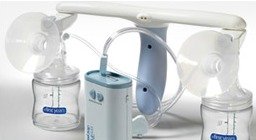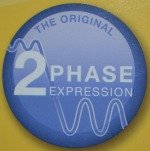Breast Pump: How to Choose, Use and Maintain

Various breast pumps serve various purposes. Nursing mothers may also have different reasons for pumping.
It is important that your pump matches how much and how often you need to pump.
Otherwise, you'll be like me: I purchased 3 pumps before I found the one that did the job!
My first advice to all moms is not to go for a used breast pump. Here is why:
1. Only rental pumps are intended for multi-user pumping; personal use pumps are single-user.
>>> Rental pumps are built so that there is no chance of milk getting inside the pump.
There is a diaphragm separating tubing from the horn.
It eliminates the risk of any contact with the previous mom’s milk and potential infections. This feature makes rental pumps expensive to purchase.
>>> Personal use pumps lack this protection.
Milk can get into the tubing and inside the pumping mechanism.
Even though most of the viruses and bacteria will die by the time a new user starts pumping, some can still transmit infections.
Even if you purchase a completely new collection kit (which is the least you should do), these pumps are not safe to be used second-hand.
2. Pumps tend to “age” and lose their strength with time.
3. Reselling a personal use pump voids the warranty.
4. Even the most expensive personal use pump can be made affordable with insurance coverage, financial aid or payment plan.
Check out this Breast Pump Comparison Table. It will help you choose the best pump for your situation and budget.
3 Things to Consider When Choosing a Pump
- 48-60 cycle repetitions per minute
It is one of the most important characteristics of a pump. A baby makes approximately 48-60 sucks per minute.
More expensive personal use electric pumps and hospital-grade pumps have the same pumping pattern as the baby (see the table).
They are the most efficient in emptying the breasts and keeping up milk supply. Other - less expensive pumps - have cycle repetition lower than 48.
- two-stage pumping pattern
More expensive electric pumps have a two-stage pumping pattern built-in.
It mimics the pattern of baby nursing. It starts with low-suction fast pumping to trigger let-down.
Followed by slower higher-suction stage that expresses the milk.
Most pumps have a switch that turns on the first low-suction stage at any time during pumping.
It is also useful when milk stops flowing and you need to stimulate your breasts and trigger another let-down.

An example of a two-stage pumping pattern is Medela's 2-Phase Expression technology. Here is a sign for it that you can find on the box:
and Medela's description:
- well-fitting breast shields
Make sure the breast shield (funnel/flange) fits your areola and nipple well. Breast shield is the part that attaches to your breast.
If your nipple is too big for the shield it may lead to nipple damage.
If it is too small the pump won’t be able to extract milk efficiently.
Breast shields included with the pump kit are usually medium size. Larger size shields are available for purchase from manufacturers.
Breast shield is the right size if
- the nipple is drawn freely into the funnel without rubbing against the sides of the shield tunnel
- when nipple is drawn into the funnel, it doesn't hurt
- the nipple isn't drawn all the way to the very base of the tunnel and doesn't block milk from flowing freely from the nipple
- there is a steady suction between nipple and the shield
- after pumping your nipples aren't swollen and sore
After trying two other pumps, I purchased Medela Pump In Style
Advanced. It met all three criteria. I used it daily and loved it.
Thanks to this pump I was able to continue breastfeeding when I returned
to work.
Pump Usage and Cleaning
Before using your pump, read the manual to understand how to maintain and clean it to prevent contamination and infections.
Before using the pump for the first time, wash and boil all the necessary pump parts as recommended in the manual.
There is no need to sterilize/boil the collection kit every day. Frequent boiling may loosen up some parts.
However, if you've had breast infection (mastitis or abscess) while using the pump, then you need to sterilize the accessories frequently to prevent re-infection.
If you spot milk or condensation in the tubing consult the pump manual. General recommendation is to leave the pump running for some time to dry up the tubes.
If you are unable to clean your pumping accessories right after pumping, you can place them in a sterile bag and refrigerate till the next use together with the pumped milk.
This way milk left on the accessories won’t spoil. Visit Breast Milk Storage section to learn how to store and freeze breast milk.
If you need to return to work at some point and pump full-time, or be away from your baby for any other reason, invest in a more expensive personal use double electric breast pump or rent a hospital-grade pump. These are the only two pump types that will be able to keep up your milk supply.
If your milk supply dropped after you started pumping, re-evaluate your pump choice. Believe me or not, but for many women hospital-grade pump is the only one providing enough stimulation.
If you suspect your personal use pump a culprit in your milk supply decrease, rent a hospital-grade pump. If that still doesn’t help, try these traditional and non-traditional methods of increasing milk supply.
Whatever your reason for using a breast pump is, be proud of yourself! Many women when unable to breastfeed, choose weaning not pumping. You, on the other hand, are committed to doing what's best for the baby - providing him/her your breast milk!
Make your pump choice easier. Click here for Breast Pump Comparison Table.
Home › Breast Pumping › Breast Pump










